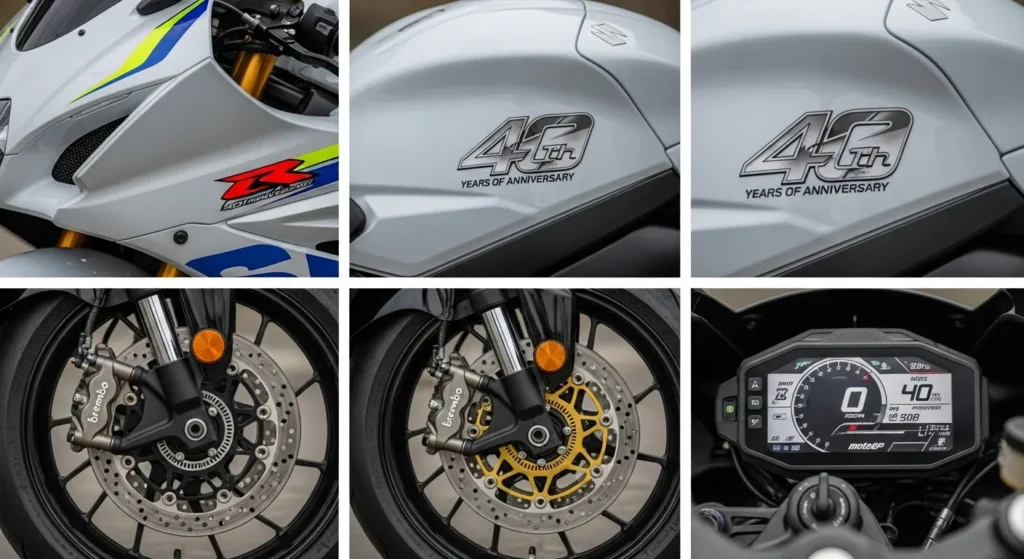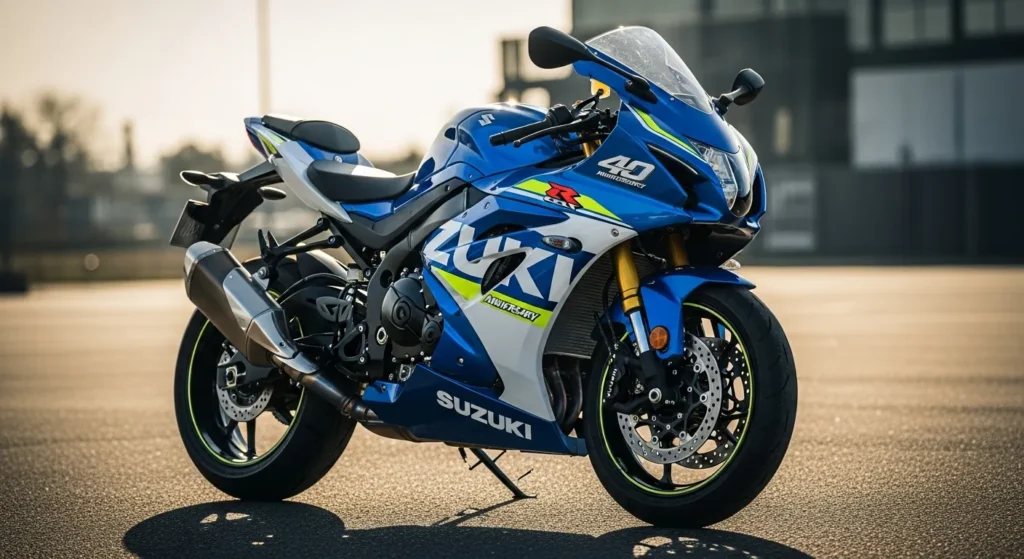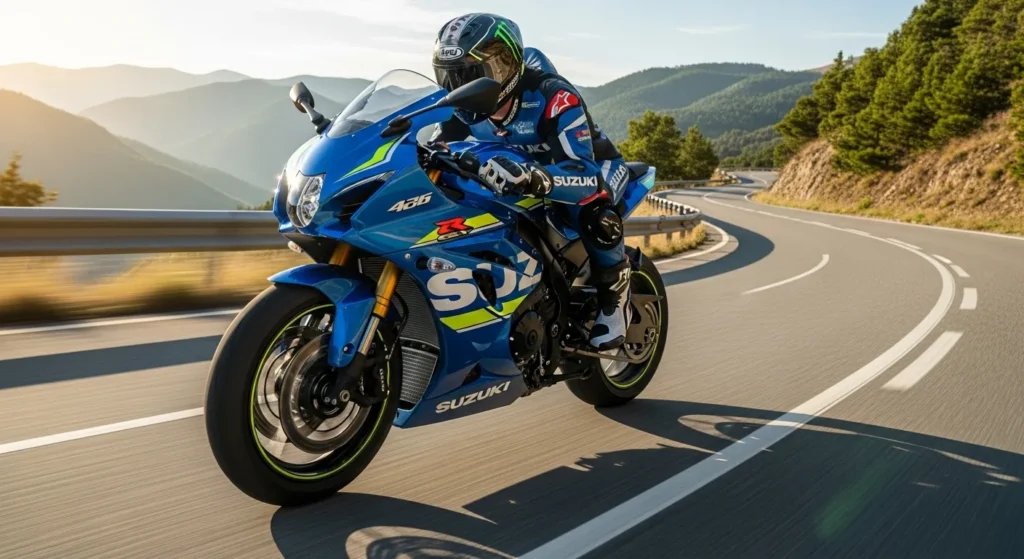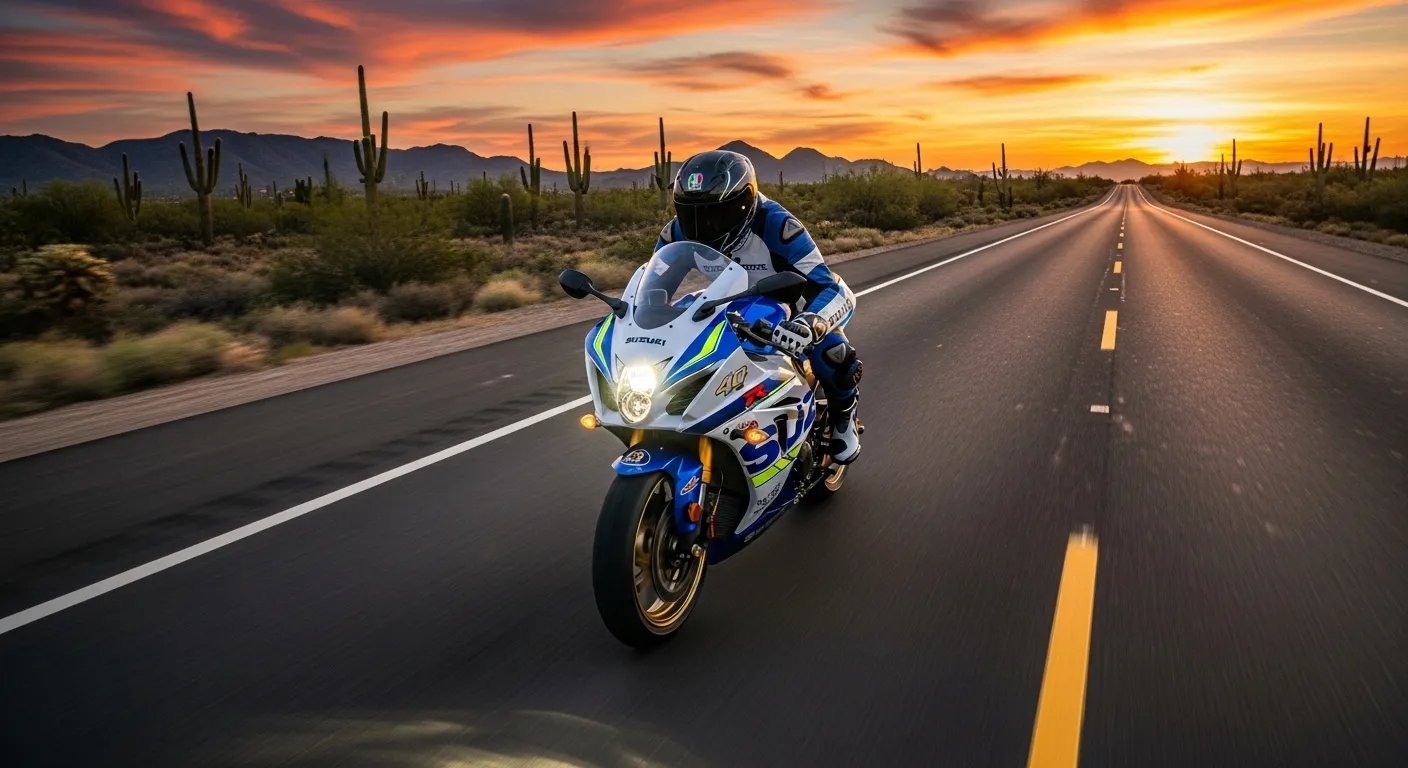When a storied sportbike family like Suzuki’s GSX-R reaches a milestone, fans pay attention. In 2025, Suzuki celebrated the 40th anniversary of the GSX-R line, and now the brand is riding that momentum into 2026 with a “second wave” of upgraded models — notably the 2026 Suzuki GSX-R 40th Anniversary Edition. With refined engines, track-inspired additions, and exclusive graphics, this launch is generating serious buzz among U.S. riders, reviewers, and collectors alike.
Why the excitement now? Beyond the anniversary hype, the 2026 update addresses both regulatory pressures (emissions, performance balance) and competitive demands. In an era where even superbikes are pressured to be street-friendly yet racetrack-capable, Suzuki’s move is strategic: retain core GSX-R DNA while layering in modern electronics, aerodynamic touches, and visual exclusivity.
Breaking Update & What Changed
Suzuki’s publicity confirms that the 2026 GSX-R1000 40th Anniversary Edition and GSX-R1000R 40th Anniversary are official.
CycleWorld’s coverage highlights that the updates include the addition of mini winglets for track use, refinements to the engine mapping, and revised internals aimed at improving both racing potential and rideability.
Key changes include:
- More linear torque delivery and revised combustion tuning.
- Mini winglets for added front-end stability at speed or on track.
- A lighter lithium-ion battery replacing the older unit.
- Special 40th anniversary graphics, tank emblems, silver engine covers, gold-anodized rotor carriers, and custom colors like Pearl Vigor Blue / Pearl Tech White.
- Bodywork tweaks for improved aerodynamics and lean-angle clearance.
This is more than a cosmetic refresh; Suzuki is pushing the 2026 anniversary models as performance-forward flagships that still wear the GSX-R badge proudly.
You must read this post: Young Riders Are Going Crazy Over the New Harley Sprint 2026
Design, Tech & Feature Highlights

Visually, the 40th Anniversary models lean heavily into nostalgia and race heritage. The color schemes echo past championship liveries. The inclusion of subtle upgrades — rotor carriers, engine covers, and stylized fairing accents — give it that “special run” feel without overstepping into gimmicky territory.
On the tech front:
- A new Bosch IMU works behind the scenes to feed data into traction control, lean-sensitive ABS, roll torque control, and lift limiter.
- The Suzuki Clutch Assist System (SCAS) remains, with slipper function on downshifts and assist under hard acceleration.
- The bi-directional quick-shift system supports clutchless upshifts and downshifts.
- The dashboard is a black-background LCD unit inspired by the GSX-RR MotoGP dash, accentuating the sport DNA.
- Optional CF-look winglets can be mounted on the fairing for more aggressive aero control.
These features align with what enthusiasts expect from premium sportbikes — no half measures.
Performance & Real-World Usage

Below is a specs snapshot (for the GSX-R1000 40th Anniversary model) based on Suzuki’s official release:
| Specification | Value |
|---|---|
| Engine Type | 999.8 cc, 4-stroke, liquid-cooled inline-four DOHC |
| Compression Ratio | 13.8:1 |
| Transmission | 6-speed, cassette-style |
| Weight (Curb) | ~203 kg / 448 lb |
| Seat Height | 825 mm (32.5 in) |
| Chassis | Twin-spar aluminum frame, arched swingarm |
| Front Suspension | Showa Big Piston Fork (adjustable) |
| Rear Suspension | Showa rear shock, adjustable |
| Brakes (Front) | Brembo four-piston, twin discs, ABS |
| Battery | New Li-ion lighter unit |
| Top Speed / Output | Suzuki hasn’t published final dyno figures yet |
What it means on the road:
- The high compression (13.8:1) and revised tuning promise crisp throttle response. In urban or twisty road settings, that linear torque curve will help prevent abrupt peaky bursts.
- At 203 kg, it’s not ultra-light but reasonable in its class — manageable for experienced riders.
- The adjustable suspension allows tuning for daily use or track deployment.
- The aero benefits from winglets may be subtle on public roads but helpful above 130 mph or during racetrack use.
In real-world riding: you’ll feel the upgraded low/mid torque in rolling overtakes. The quick-shift and slipper functionality smooth transitions in sport riding. On highway dumps or sweepers like I-70 or US-50, those mini winglets could slightly aid front-end stability and rider confidence (especially in gusty wind).
Please take a look at this post as well: Vintage Soul, Modern Heart: Why the Kawasaki W230 Is Going Viral
How It Stacks Up vs Rivals
Competing against liter-class superbikes like the Yamaha YZF-R1, Kawasaki ZX-10R, and Honda CBR1000RR, Suzuki’s 2026 push is timely.
- The Yamaha R1 still boasts its crossplane crank and excellent engine character, but it doesn’t lean into anniversary exclusivity as aggressively.
- The Kawasaki ZX-10R often comes decked out with top-tier electronics and power, but it has sometimes been criticized for its street manners.
- The Honda CBR1000RR trades a bit of outright edge for usability and reliability.
Suzuki’s advantage lies in its package: credible electronics, tasteful anniversary touches, and the weight/balance compromises that keep the bike versatile for both street and occasional track duty.
Compared to the prior GSX-R1000, these 2026 updates are more than incremental. The mini winglets and tuning updates address critiques from earlier owners who wanted more front-end grip at speed, and better low-end tractability. CycleWorld notes these are deliberate to “boost racing potential.”
Latest News & Developments
- Suzuki’s official site already lists the 2026 GSX-R1000 40th Anniversary model and variant details.
- The announcement confirms base MSRP will be revealed soon; special edition models often carry a premium.
- CycleWorld’s article (July 2025) dug into the internal upgrades and winglet addition ahead of public demo rides.
- Interest is high on social media: Suzuki’s own post on their cycles page teased the 40th Anniversary model launch.
- Some early dealer promotional pages (BB Motorsports, Andre & Son) are already listing the 2026 GSX-R1000 40th Anniversary version.
We might soon see first ride reviews, pricing announcements per U.S. region, or limited-run allocations to top Suzuki dealers. Those will deepen the discourse around desirability and availability.
Future Roadmap / What’s Next

Suzuki has signaled this is not a one-off showpiece — the “second wave” implies further rollouts across the GSX-R family (e.g. GSX-R750Z 40th Anniversary edition is already listed).
Please take a look at this post as well: Royal Enfield Electric Lineup Grows With Flying Flea FF-C6
We may also see:
- Special accessory packages (e.g. track kits, carbon parts) exclusive to anniversary models
- Limited production runs, serialized VINs or certificate-of-authenticity editions
- Further engine tuning or variant splits (street vs track versions)
- Euro / international variants with adjusted emissions or power limits
For U.S. riders, an eagerly awaited next step is the MSRP breakdown, dealer allocation, and whether a “launch edition” version with added extras will hit the market.
Who Should Buy & Final Thoughts
If you’re a rider who values heritage, collector appeal, and a sportbike that still works on both street and occasional track days, the 2026 Suzuki GSX-R 40th Anniversary Edition is compelling. The upgrades are real — not just paint and decals — and Suzuki seems committed to preserving core GSX-R character: lean, fast, and rider-focused.
That said, it’s not perfect. The curb weight is not dramatically lower. We’re still waiting on published power figures. For riders who prioritize naked usability, fuel economy, or ultra-light weight for canyon carving, some alternatives may still hold sway.
In summary: Suzuki’s second wave for 2026 is off to a strong start. The 40th Anniversary GSX-R blends heritage, tech, and performance in a way that resonates not only with longtime fans but with newer riders seeking a flagship sportbike with story and substance.
If you like, I can build a U.S.-region forecast (pricing, availability) or produce a focused review for the GSX-R750Z 40th Anniversary. Which direction do you want next?
